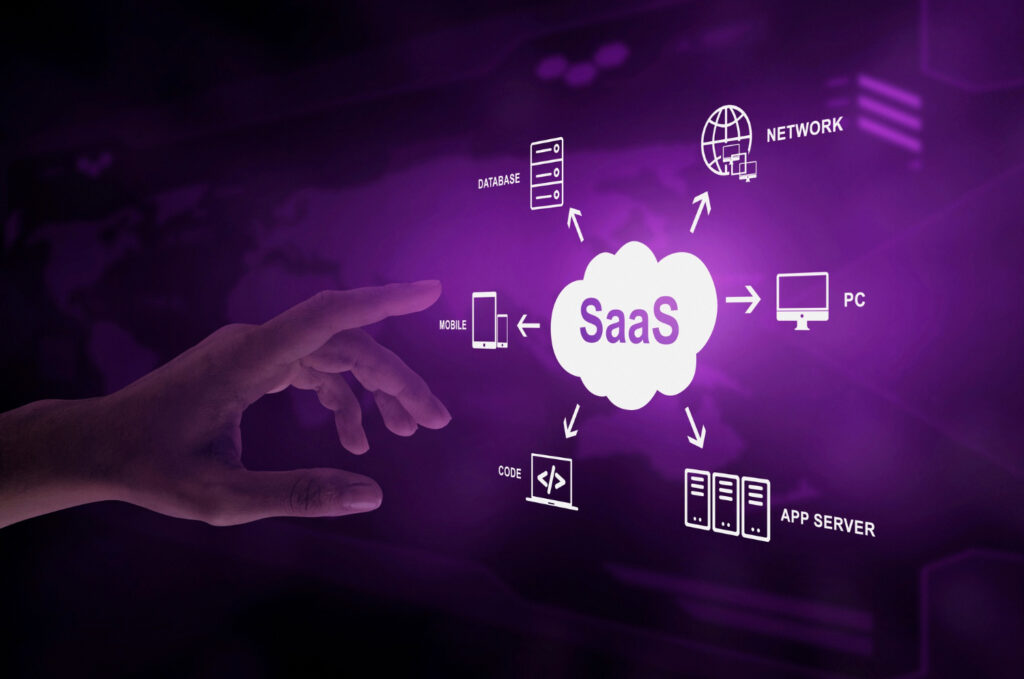As the SaaS industry grows and becomes more competitive, it’s becoming increasingly important for companies to measure their performance in order to improve it. Tracking the right metrics can help SaaS companies understand their business better, make better decisions, and ultimately achieve faster growth. In this article, we’ll cover the 30 most important SaaS growth metrics every company should be tracking, why they’re important, and how to calculate them.
Monthly Recurring Revenue (MRR)
Monthly Recurring Revenue (MRR) is the amount of revenue a SaaS company generates each month from its subscription-based services. It is a key metric for measuring the health of a SaaS business, as it provides insight into the company’s revenue stability and growth potential. To calculate MRR, you need to multiply the number of paying customers by their average monthly subscription fee.
Annual Recurring Revenue (ARR)
Annual Recurring Revenue (ARR) is similar to MRR, but it measures the amount of recurring revenue a SaaS company generates annually. ARR is important because it provides a better understanding of a company’s long-term growth potential, which is critical for investors and stakeholders. To calculate ARR, you need to multiply your MRR by 12.
Customer Acquisition Cost (CAC)
Customer Acquisition Cost (CAC) measures the cost of acquiring a new customer. This includes all expenses associated with acquiring customers, such as marketing and advertising costs, sales salaries and commissions, and other overhead expenses. CAC is a key metric for measuring the efficiency and profitability of a SaaS company’s customer acquisition strategy. To calculate CAC, divide your total acquisition costs by the number of new customers you acquired in a given period.
Customer Lifetime Value (CLV)
Customer Lifetime Value (CLV) measures the total revenue a customer is expected to generate over the course of their relationship with a company. CLV is important because it helps companies understand the long-term value of their customers, and it can help guide decisions related to customer acquisition and retention. To calculate CLV, multiply the average revenue per customer by the average customer lifespan.
Monthly Active Users (MAU)
Monthly Active Users (MAU) measures the number of unique users who interact with a SaaS product in a given month. MAU is an important metric for measuring product engagement and adoption. It can also help companies understand how changes to their products impact user behavior. To calculate MAU, count the number of unique users who interacted with your product in a given month.
Daily Active Users (DAU)
Daily Active Users (DAU) measures the number of unique users who interact with a SaaS product in a given day. DAU is similar to MAU, but it provides more granular data about user engagement. DAU is an important metric for measuring the stickiness of a product and the frequency of user interactions. To calculate DAU, count the number of unique users who interacted with your product on a given day.
Churn Rate
Churn Rate measures the rate at which customers stop using a SaaS product. Churn is a critical metric for SaaS companies because it directly impacts revenue growth. High churn rates can indicate problems with product quality, customer service, or pricing. To calculate the churn rate, divide the number of customers lost during a given period by the total number of customers at the beginning of that period.
Net Promoter Score (NPS)
Net Promoter Score (NPS) measures the likelihood that a customer would recommend a SaaS product to others. NPS is an important metric for measuring customer satisfaction and loyalty. A high NPS can indicate a strong product-market fit and a loyal customer base. To calculate NPS, ask customers to rate their likelihood of recommending your product on a scale of 0 to 10. Customers who rate 9 or 10 are considered promoters, while those who rate 0 to 6 are considered detractors. Subtract the percentage of detractors from the percentage of promoters to get your NPS.
Customer Retention Rate (CRR)
Customer Retention Rate (CRR) measures the percentage of customers who continue to use a SaaS product over time. CRR is a key metric for measuring customer satisfaction and loyalty. A high CRR can indicate a strong product-market fit and a loyal customer base. To calculate CRR, subtract the number of customers lost during a given period from the total number of customers at the beginning of that period, and divide the result by the total number of customers at the beginning of the period.
Gross Margins
Gross Margins measure the profit a SaaS company generates from its services after accounting for the cost of goods sold. Gross margins are important because they indicate how efficiently a company is using its resources to generate revenue. To calculate gross margins, subtract the cost of goods sold from total revenue, and divide the result by total revenue.
Operating Margins
Operating Margins measure the profit a SaaS company generates from its operations after accounting for all expenses, including salaries, rent, and other overhead costs. Operating margins are important because they provide insight into a company’s overall profitability. To calculate operating margins, subtract all expenses from total revenue, and divide the result by total revenue.
Free-to-Paid Conversion Rate
Free-to-Paid Conversion Rate measures the percentage of the free trial or freemium users who upgrade to a paid subscription. This metric is important for measuring the effectiveness of a company’s product marketing and sales efforts. To calculate the free-to-paid conversion rate, divide the number of paying customers by the total number of free trial or freemium users.
Customer Acquisition Rate
Customer Acquisition Rate measures the rate at which a SaaS company is acquiring new customers. This metric is important for measuring the effectiveness of a company’s customer acquisition strategies. To calculate the customer acquisition rate, divide the number of new customers by the total number of customers.
Lead-to-Customer Conversion Rate
Lead-to-Customer Conversion Rate measures the percentage of leads that turn into paying customers. This metric is important for measuring the effectiveness of a company’s sales process. To calculate the lead-to-customer conversion rate, divide the number of paying customers by the total number of leads.
Average Revenue Per User (ARPU)
Average Revenue Per User (ARPU) measures the average revenue generated by each customer over a given period. This metric is important for measuring a company’s revenue growth potential. To calculate ARPU, divide total revenue by the total number of customers.
Cost Per Acquisition (CPA)
Cost Per Acquisition (CPA) measures the cost of acquiring a new customer through paid marketing channels. This metric is important for measuring the effectiveness and efficiency of a company’s marketing strategies. To calculate CPA, divide the total cost of paid marketing by the number of new customers acquired.
Customer Effort Score (CES)
Customer Effort Score (CES) measures how easy it is for customers to use a SaaS product. This metric is important for measuring customer satisfaction and loyalty. To calculate CES, ask customers to rate how easy it was to use your product on a scale of 1 to 7.
Customer Engagement Score (CES)
Customer Engagement Score (CES) measures how engaged customers are with a SaaS product. This metric is important for measuring the effectiveness of a company’s product and marketing strategies. To calculate CES, use a combination of metrics such as MAU, DAU, and time spent using the product.
Monthly Recurring Profit (MRP)
Monthly Recurring Profit (MRP) measures the total amount of recurring revenue generated by a SaaS company each month. This metric is important for measuring a company’s financial stability and growth potential. To calculate MRP, multiply the total number of paying customers by the monthly subscription fee.
Customer Lifetime Value (CLV)
Customer Lifetime Value (CLV) measures the total revenue a company can expect to generate from a single customer over their lifetime. This metric is important for measuring the long-term value of a customer to a company. To calculate CLV, multiply the average revenue per customer by the customer retention rate and the average customer lifespan.
Payback Period
The payback period measures the length of time it takes for a SaaS company to recoup the cost of acquiring a new customer. This metric is important for measuring the financial efficiency of a company’s customer acquisition strategies. To calculate the payback period, divide the cost of customer acquisition by the average revenue per customer.
Churn Rate
Churn Rate measures the percentage of customers who cancel their subscriptions or do not renew their contracts during a given period. Churn is a critical metric for SaaS companies because it directly impacts revenue and customer lifetime value. To calculate the churn rate, divide the number of customers lost during a given period by the total number of customers at the beginning of the period.
User Retention Rate
User Retention Rate measures the percentage of users who continue to use a SaaS product over time. User retention is important for measuring customer satisfaction and loyalty, as well as overall product engagement. To calculate the user retention rate, divide the number of active users at the end of a given period by the total number of users at the beginning of the period.
Activation Rate
Activation Rate measures the percentage of users who complete a specific action or reach a specific milestone within a SaaS product. Activation is important for measuring the effectiveness of a company’s onboarding process and product engagement. To calculate the activation rate, divide the number of users who complete the action or reach the milestone by the total number of users.
Referral Rate
The referral Rate measures the percentage of customers who refer new customers to a SaaS company. Referral marketing is a powerful growth strategy for SaaS companies because it is a low-cost, high-conversion channel. To calculate the referral rate, divide the number of new customers acquired through referrals by the total number of customers.
Viral Coefficient
The viral Coefficient measures the rate at which a SaaS company’s product is shared by existing customers with their network. Viral marketing is a powerful growth strategy for SaaS companies because it can result in exponential growth. To calculate the viral coefficient, multiply the average number of invites per user by the conversion rate of those invites.
Customer Support Metrics
Customer Support Metrics measure the effectiveness and efficiency of a SaaS company’s customer support team. Metrics such as response time, resolution time, and customer satisfaction score are important for ensuring that customers receive high-quality support and remain satisfied with the product.
Website Metrics
Website Metrics measure the effectiveness of a SaaS company’s website in attracting and converting visitors into customers. Metrics such as bounce rate, time on page, and conversion rate are important for optimizing website design and content.
Marketing Qualified Leads (MQLs)
Marketing Qualified Leads (MQLs) measure the number of leads that have demonstrated interest in a SaaS company’s product or service and are deemed ready for further engagement by the sales team. MQLs are important for measuring the effectiveness of a company’s marketing strategies and the quality of its leads.
Sales Qualified Leads (SQLs)
Sales Qualified Leads (SQLs) measure the number of leads that have been deemed qualified by the sales team and are ready for direct sales outreach. SQLs are important for measuring the effectiveness of a company’s lead qualification process and the quality of its leads.
Conclusion
Tracking the right SaaS growth metrics is critical for measuring the success of a SaaS company’s growth strategies, identifying areas for improvement, and making data-driven decisions. The 30 SaaS growth metrics discussed in this article cover a range of important areas, including customer acquisition, retention, engagement, and revenue. By regularly tracking and analyzing these metrics, SaaS companies can better understand their customers, optimize their growth strategies, and achieve long-term success.
Get in touch with the Gignaut team today to start measuring and improving your marketing efforts.
Check the B2B SaaS Marketing Handbook to learn more.
Uzma is a Professional Content Writer and Certified Digital Marketing Expert




